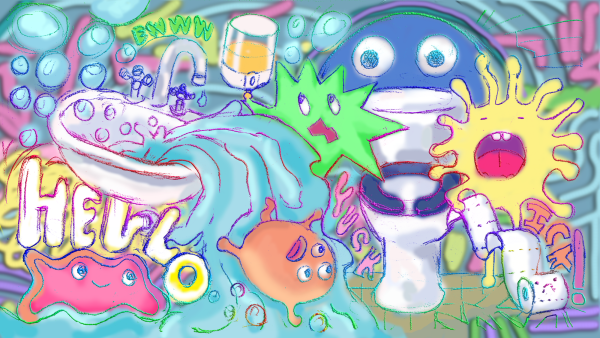Campus Corner: Ingredients in organic products are not always healthy
Growing up in a household with my mom’s illness of diabetes, restricted the consumption of unhealthy sugary foods and beverages for my siblings and me which meant we had to scour for healthy options that would satisfy our childlike taste buds that yearned for all things sweet.
Luckily for us, we didn’t have to scour too far as we shopped on the bougie side of Los Angeles, primarily Whole Foods, Erewhon, and Co-opportunity, where the sweets and treats were all labeled “organic” giving us the unannounced permission to purchase and consume.
And the purchasing of organic items didn’t stop with food; it extended to hair care products and household cleaning items. Our house was filled with exclusively healthy products deemed by the “organic” printed across its label.
However, not all things “organic” automatically translate into healthy. I would not be making this statement were it not for an environmental course I have taken. This course listed alarming chemical toxins in everyday products, one of these chemicals is parabens.
I’ve briefly heard of parabens before through paraben-free items, yet I never knew why they existed. Why specifically make a paraben-free product?
Parabens are used as preservatives in products especially in products with a high-water consistency.
Things like lotions, toothpaste, and liquid soap commonly contain parabens. This means that there are likely parabens in the soaps and hand sanitizers here on ECC’s campus.
Parabens are listed under the ingredients of a product with a prefix of methyl-, ethyl-, propyl-, isopropyl-, butyl-, or isobutyl. For example, methylparaben could be listed as an ingredient.
Parabens are thought to be endocrine disrupters. Any endocrine disrupter can mess with development within the human body, such as brain development. Parabens are the type of endocrine disrupters to mess with the estrogen hormone.
Moreover, some researchers suggest that parabens may cause breast tumors since breast tumors involve a disruption of estrogen receptors. In turn, some breast tumors can lead to breast cancer.
There’s no direct association between parabens and breast tumors/cancer. However, there is enough concern for producers and marketers to boast paraben-free on their products. Agencies who federally regulate food (i.e. FDA) don’t share this same concern though—not even for organic products.
For products to become organic, they have to undergo a process. This process includes a fee and inspection.
Among other things, the inspection done by the U.S Department of Agriculture (USDA) requires the product to meet the standards of the National List of Allowed and Prohibited Substances.
As the name suggests, this list includes substances that are both allowed and not allowed in organic products. Parabens are not on this list which means they can freely float in any product, including organic products like the ones sold here on campus.
And parabens do freely float in organic products.
Companies like LUSH, whose cosmetic products are known to be organic, don’t avoid parabens: “Parabens have been used for [many] years with a history of safe human use, which is why we feel confident using them in some of our products in minimal amounts to keep them fresh” a LUSH trainer, Amanda Sipenock, explained to Teen Vogue.
No matter the rationale behind the use of parabens in organic products, it’s still using potentially harmful chemicals in a product targeted for the health-conscious audience.
Producers and companies that use parabens in their organic products betray the trust of consumers by signaling that their product is beneficial to health when it’s not. And the sad part is that we can’t blame them. Well, not legally anyway as it’s perfectly legal for this to occur.
All we can do for now is become more conscious than before by surpassing the alluring label marked “organic” and actually read the ingredients.








